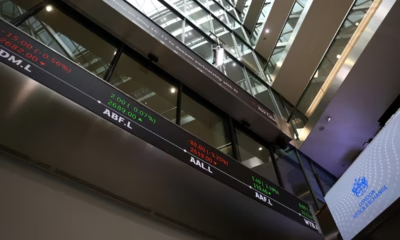Latest News
Inside the Housing Crunch and the Real Cost of London Living

Introduction
London’s housing market stands at a difficult turning point. For years, the city has been a magnet for global investment and a symbol of urban success. Yet beneath its skyline of new towers and historic terraces lies a deepening crisis of affordability. The combination of rising interest rates, inflation, and limited supply has made it harder than ever for ordinary Londoners to buy or rent a home.
According to the Office for National Statistics, average rents in the capital have increased by more than six percent in the past year, while house prices have recorded a small decline for the first time in over a decade. The picture is complex. Home ownership is slipping further out of reach for many, and renting has become more expensive even as the broader market shows signs of cooling.
Economic Pressures on Housing Supply
The economic slowdown has collided with long-standing structural problems in the housing market. The Bank of England’s decision to maintain high interest rates to control inflation has made mortgages more expensive and reduced demand for new purchases. The average two-year fixed mortgage rate remains above six percent, more than double the level seen before the pandemic.
Developers are struggling to keep projects on track. Rising construction costs, delays in planning approvals, and expensive financing have led to a sharp drop in new housing starts. Data from the Royal Institution of Chartered Surveyors show a decline of nearly twenty percent in new projects this year. With fewer homes being built and borrowing costs still high, the shortage of affordable housing continues to worsen.
The Rent Burden on Londoners
Renters are facing some of the toughest conditions in years. Demand for rental housing has surged as fewer people can afford to buy, pushing rents to record levels. The ONS reports that the average monthly rent in Greater London now exceeds £2,100, the highest figure ever recorded. Even traditionally more affordable areas such as Croydon and Barking are seeing double-digit rent increases.
At the same time, many private landlords are leaving the market. Higher taxes, new regulations, and increasing maintenance costs have made renting out properties less profitable. This exodus has reduced supply and created fierce competition among tenants. Many Londoners now spend more than half of their income on housing, a level the IMF describes as unsustainable for long-term financial stability.
Social and Policy Dimensions
The affordability crisis has become a defining social issue for the capital. Essential workers, from teachers to nurses and transport staff, are being priced out of the areas where they work. The result is longer commutes, labour shortages in key sectors, and growing inequality between those who own property and those who do not.
City Hall has promised to deliver more affordable homes, but progress remains slow. Initiatives such as Shared Ownership and First Homes have offered some support but cannot fully offset the impact of rising costs. The Mayor’s office has also begun exploring options for rent regulation, a move that divides economists and property owners alike. Long-term solutions will depend on stronger cooperation between local councils, developers, and central government.
Investment Trends and Market Shifts
London’s property market has long depended on international investment, but that dynamic is changing. Global investors are becoming more cautious as interest rates rise across major economies. Data from Savills indicate a decline of more than twenty percent in foreign residential investment over the past year. Currency fluctuations and geopolitical uncertainty have further dampened demand from overseas buyers.
At the same time, institutional investors are expanding their presence in the build-to-rent sector. These large-scale developments promise professional management and long-term stability, but critics warn that they may reinforce high rent levels if left unchecked. The challenge for policymakers is to encourage investment that supports affordability rather than speculation.
The Wider Cost of Living Challenge
Housing costs are only one part of London’s growing affordability problem. Transport, energy, and food prices remain high, eroding disposable income. Inflation has eased from its recent peaks, but price levels have not fallen. The Bank of England expects interest rates to remain elevated until inflation returns close to its two percent target, limiting relief for homeowners and developers.
For many households, this means difficult trade-offs. Young professionals are delaying home purchases, families are relocating to commuter towns, and retirees are downsizing to cut costs. The population shifts that follow could reshape London’s social fabric and labour market over the next decade.
Possible Paths Forward
Experts agree that solving the housing crisis will require a coordinated and sustained effort. Faster planning approvals, investment in social housing, and incentives for smaller developers are among the most frequently proposed reforms. The government could also play a greater role in supporting affordable housing through targeted fiscal measures rather than broad subsidies that inflate demand.
Innovative approaches such as modular housing and public-private partnerships could help accelerate delivery while keeping costs manageable. At the same time, greater transparency in rental markets and protections for tenants could restore some balance in the short term. London’s challenge is not only to increase supply but to ensure that growth is inclusive and sustainable.
Conclusion
The London housing crunch captures the intersection of economic policy, social change, and urban inequality. Falling prices have not translated into greater affordability, and rising rents continue to squeeze household budgets. The market is cooling, but the pressure on residents remains intense.
Addressing these problems will require more than temporary interventions. It will demand structural reform, innovative thinking, and political commitment. The real cost of London living is now testing the limits of what the city can sustain, and how it responds will define its future as a place where people not only work and invest but also truly live.



















